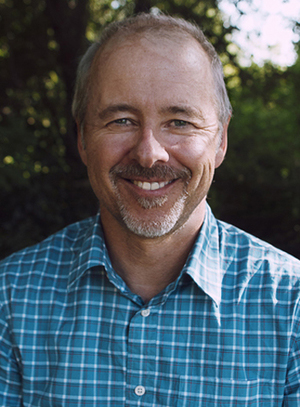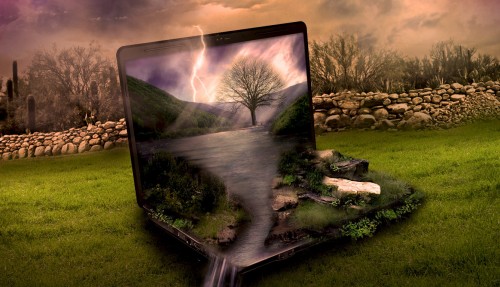Guest post by Robert Kershaw
Retreats for staff of the Center for Digital Storytelling happen twice a year, and are a chance for us to get together so we can talk about the work we do and explore ways we can do it better. With so much to discuss and much at stake, they are as challenging as they are vital.
The gathering in April was different in one significant way. We decided that each of us would commit to making a digital story. A story that in some way connects us to the work we do. It was the first time in my seven years at the Center that we’d done anything like this as a staff — practise what we preach. So on our last day together, we held a story circle and shared our stories, ideas for stories, motivations and doubts, tears and affirmations. Some of us already had scripts, some brought photos. We all brought ourselves, fully, into the circle.
I brought a CD. The disk was titled, “Bearing Witness VO,” handwritten with black Sharpie and dated June 2004. (VO is the abbreviation for “voice-over” — the audio recording of a storyteller reading a script.) I had found the CD while rummaging through a box of media — mostly photographs — under my desk at home. I was looking for a small orange album that contained photos from a time spent in the Canadian sub-arctic, specifically the summer of 2001 when I first heard about the Center. I figured I would tell the story about my trajectory from a remote Déne community in northern Canada to Berkeley, California, in 2003 to take my first digital storytelling workshop.
I found the album, but now I also had this CD, long forgotten about. On the CD was the VO recording I had made during the very first facilitator-training workshop offered by the Center, held June 2004 in Ukiah, California.
I took the CD along with the photos to the retreat. We listened to the recording. It was the first time I’d heard it in almost nine years.
The script was actually revised from a column I had written in 1998 for the rural newspaper I co-owned back then. The Waterton-Glacier Views covered events and news in and around the Waterton Lakes National Park, Alberta, and Glacier National Park, Montana. The column was called “Road Songs: Traveling with the Waterton-Glacier Views.” Once a week I would take to the highway in a plain white panel van to distribute nearly 10,000 newspapers.
The route was an exhausting 500-mile marathon that started at first light and led me through communities with names like Pincher Creek, Crowsnest Pass, Fort Macleod, Twin Butte, Cardston, Babb, Browning, St. Mary’s, West Glacier, and Kalispell. As the sun set, I would return against the grain, over the Going-to-the-Sun-Road, desperate to make the Chief Mountain border crossing before it closed for the night. Despite the long haul, it was a welcome break from storylines and deadlines and I was able to roll down the window and breathe in, if only for fleeting moments, the expanse of grassland, forest, and mountains that had compelled me to move to southern Alberta in the first place. But that’s another trajectory, another story yet to be told.
I didn’t make the digital story back in Ukiah in 2004 partly because I was too busy learning about facilitation while supporting others as they created their own stories. But I think a more considered reason was that my story felt different within the workshop process, an imposter, like I was cheating, bringing something I had written six years prior into a process geared to help people “find” their story. “Why this story? Why this story now?” we ask people. Then, of course, there is also the fear inherent with any creative venture. So the recording was burned onto a CD and buried.
But now the genie was out of the bottle and I couldn’t let it go back.
What I am coming to realize over the ten years since I made my first digital story, is the creative range the form offers us if we’re open to it. That these short narratives told in the first person, which often use still images disconnected to the storyline in time or place, but still connected someway, somehow, have a place both within the world of storytelling and within the world of filmmaking. That’s a bold statement and perhaps some who proclaim themselves storytellers (a conceit if there ever was one, as if the rest of us aren’t) and filmmakers (a conceit inherent within the celebrity of filmmaking, because only someone with a pedigree in filmmaking can make films) might take offence. I’m not saying any of this to undermine the storyteller or the filmmaker, but rather to challenge the digital storyteller — me.
And so, after all of this and that, “Bearing Witness” has come to be.
This essay and video are reprinted with the permission of Rob Kershaw. Originally published July 16, 2013 (Center for Digital Storytelling).

Rob Kershaw
ROBERT KERSHAW is Director of Canadian Projects at the Center for Digital Storytelling and Co-ordinator of the Center’s Witness Tree program initiative. Robert has been facilitating digital storytelling workshops and supporting community media projects in Canada, the United States, and internationally since 2001, including a recent workshop for writer Terry Tempest Williams (When Women Were Birds; Finding Beauty in a Broken World) at Utah State University.
Rob is a graduate of the University of Calgary with a Bachelor of Science in Ecology and Communications Studies. A former ranch hand and publisher of a regional newspaper that served communities around the Waterton-Glacier International Peace Park, he has written, edited, and designed a number of books including: Exploring the Castle, Discovering the Backbone of the World (Rocky Mountain Books, 2008); The Sáhtu Atlas: Maps and Stories from the Sáhtu Settlement Area in Canada’s Northwest Territories (2006) and If Only We Had Known: The History of Port Radium as Told by the Sahtúot’ine (Déline First Nation, 2005). He lives in Berkeley, California, with his wife and two children.
The Center for Digital Storytelling is an international non-profit organization based in Berkeley, CA, rooted in the art of personal storytelling. StoryCentre Canada is now a non-profit charitable organization in Canada.
